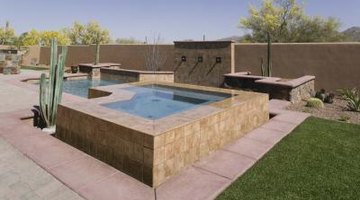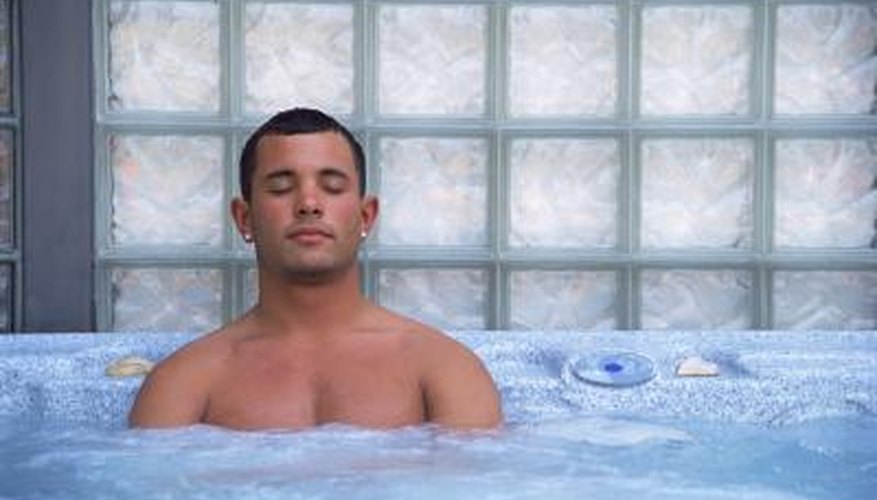Those who own hot tubs may wonder just how much chlorine goes into a hot tub to maintain water sanitation. Ideally, chlorine levels in a hot tub should be either at or slightly above levels similar to a swimming pool's. In fact, the only real difference between swimming pools and hot tubs, as far as chlorine is concerned, has to do with water temperatures. Hot tubs feature much warmer water than that found in swimming pools, and chlorine needs to be tended to carefully.
Using Chlorine
Chlorine is the most common sanitiser used to keep water in hot tubs or swimming pools clean. In a hot tub, chlorine should be maintained at a level of 1 to 3 parts per million (ppm). For hot tubs, only about a capful of chlorine is required to deliver a 1 to 3 ppm level. The best type of chlorine for a hot tub is granular chlorine, which is more stable in the very warm water found in hot tubs.
- Chlorine is the most common sanitiser used to keep water in hot tubs or swimming pools clean.
- For hot tubs, only about a capful of chlorine is required to deliver a 1 to 3 ppm level.
pH
Just as with a swimming pool, a hot tub's pH balance is very important as it relates to chlorine levels. A pH range of 7.2 to 7.8 is ideal for a hot tub, and the granular chlorine in it will be at its most effective. The pH levels in a hot tub that are below 7.2 will begin causing chlorine to disappear. A hot tub pH level above 7.8 causes available chlorine to work very sluggishly.
- Just as with a swimming pool, a hot tub's pH balance is very important as it relates to chlorine levels.
- The pH levels in a hot tub that are below 7.2 will begin causing chlorine to disappear.
Outdoor Tubs

Hot tubs located outdoors are often exposed to high levels of bright sunlight. Chlorine in pools and hot tubs can be easily degraded or dissipated by sunlight. Chlorine stabilisers like cyanuric acid (CYA) generally should not be used to stabilise outdoor hot tub chlorine levels. CYA in a hot tub can greatly slow down hot tub chlorine, which is needed to kill the bacteria Pseudomonas aeruginosa (P. aeruginosa), which can cause what's called "hot tub itch" in tub users.
- Hot tubs located outdoors are often exposed to high levels of bright sunlight.
- Chlorine in pools and hot tubs can be easily degraded or dissipated by sunlight.
Adding Chemicals
If filling a hot tub with water for the first time or after it has been drained, begin adding chlorine once water is at about 26.7 degrees C. In any case, after adding chlorine to a hot tub, wait about 30 minutes, measure pH and then adjust as necessary. Hot tubs are susceptible to scaling and staining, so add 1 capful of scale and stain control as well. Always test for total alkalinity and adjust it to 100 ppm using alkalinity increasers or decreasers.
Chemical Balancing
Chlorine and pH in a hot tub depend on one another for both to be effective. You can raise hot tub chlorine by adding a little more and then retesting. The pH in hot tubs is raised by adding a commercial pH increaser and lowered by using pH decreasers. Amounts of pH increasing and decreasing compounds used in a hot tub depend on how large, in gallons, the hot tub is. However, most chemicals are added to hot tubs in capfuls only.
- Chlorine and pH in a hot tub depend on one another for both to be effective.
- The pH in hot tubs is raised by adding a commercial pH increaser and lowered by using pH decreasers.
